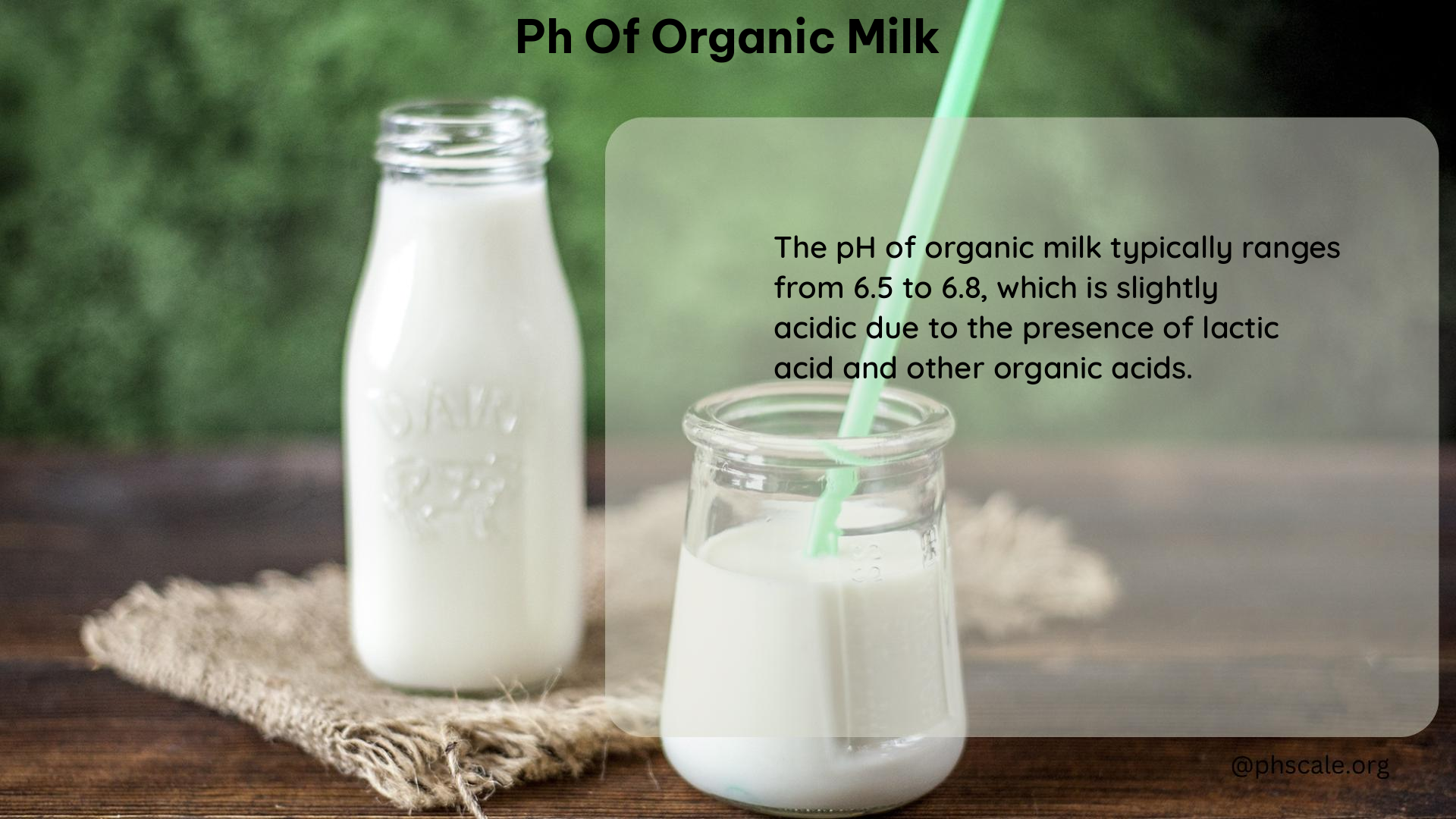The pH of organic milk is a crucial factor that determines its quality, freshness, and overall suitability for consumption. Typically, organic milk has a pH range between 6.5 and 6.7, which is slightly acidic or close to neutral. This pH range is similar to that of conventional milk, as both types of milk undergo similar changes over time, becoming more acidic as they go sour due to the conversion of lactose sugar into lactic acid by lactic acid bacteria.
Understanding the pH of Organic Milk
The pH of milk is a measure of its acidity or alkalinity, with a range from 0 to 14. A pH of 7 is considered neutral, while values below 7 are acidic, and values above 7 are alkaline. The pH of organic milk is typically slightly acidic, falling within the range of 6.5 to 6.7.
Changes in pH Over Time
As organic milk ages, it becomes more acidic due to the conversion of lactose sugar into lactic acid by lactic acid bacteria. This process is known as souring, and it causes the pH of the milk to decrease over time. The rate at which this occurs can be influenced by factors such as storage temperature, handling, and the presence of other microorganisms.
Comparison to Conventional Milk
The pH range of organic milk is similar to that of conventional milk, indicating that both types of milk undergo similar changes over time. This is because the underlying chemical and biological processes that affect the pH of milk are largely the same, regardless of whether the milk is organic or conventionally produced.
Titratable Acidity and Lactic Acid Content

In addition to the pH, the titratable acidity and lactic acid content of organic milk are also important factors to consider.
Titratable Acidity
Organic milk has a titratable acidity in the range of 6.0–7.2 °SH, which is consistent with Polish requirements for drinking milk. Titratable acidity is a measure of the total amount of acid present in the milk, including both lactic acid and other acidic compounds.
Lactic Acid Content
Organic yoghurts typically have a lactic acid content of around 0.96 g/100 g, which is similar to that of conventional yoghurts. Lactic acid is the primary acid produced during the fermentation of milk by lactic acid bacteria, and it contributes to the sour taste and low pH of yoghurt.
Contaminants and Chemicals
While organic milk is generally considered a healthier alternative to conventional milk, it is not immune to potential contaminants and chemical issues.
Mycotoxins
Organic milk may contain mycotoxins, which are toxic compounds produced by fungi that can contaminate milk. These mycotoxins can pose a health risk if consumed in high quantities.
Bacterial Contamination
Organic milk can also be contaminated by bacteria, which can affect its pH and overall quality. Proper handling, storage, and pasteurization are essential to minimize the risk of bacterial contamination.
Balancing pH
Maintaining a healthy pH balance in the body is important for overall well-being, and the consumption of organic milk can play a role in this.
Dietary Balance
Eating a balanced diet with both acid-forming and alkaline-forming foods can help maintain a healthy pH balance in the body. Consuming alkaline-forming foods like fruits and vegetables can help counterbalance the acidity of milk and other acid-forming foods.
Home Remedies and Solutions
There are a few simple solutions and home remedies that can help monitor and maintain the pH of organic milk.
Monitoring pH
Using pH-indicator strips or smartphone apps can provide a quick and easy way to determine the pH of milk and milk products. This can be useful for monitoring the freshness and quality of organic milk.
Pasteurization
Pasteurization is a process that can help reduce bacterial contamination and maintain a stable pH in milk. This is an important step in ensuring the safety and quality of organic milk.
In conclusion, the pH of organic milk is typically slightly acidic, falling within the range of 6.5 to 6.7. This pH range is similar to that of conventional milk, as both types of milk undergo similar changes over time. While organic milk may be subject to contaminants and chemical issues, maintaining a balanced diet and using simple home remedies can help ensure the quality and safety of this nutritious dairy product.
References:
- https://www.thoughtco.com/what-is-the-ph-of-milk-603652
- https://www.ncbi.nlm.nih.gov/pmc/articles/PMC8532914/
- https://www.healthline.com/health/ph-of-milk
- https://www.arcjournals.org/pdfs/ijarps/v4-i12/1.pdf
- https://www.sigmaaldrich.com/US/en/technical-documents/protocol/analytical-chemistry/photometry-and-reflectometry/ph-of-milk-and-milk-products
